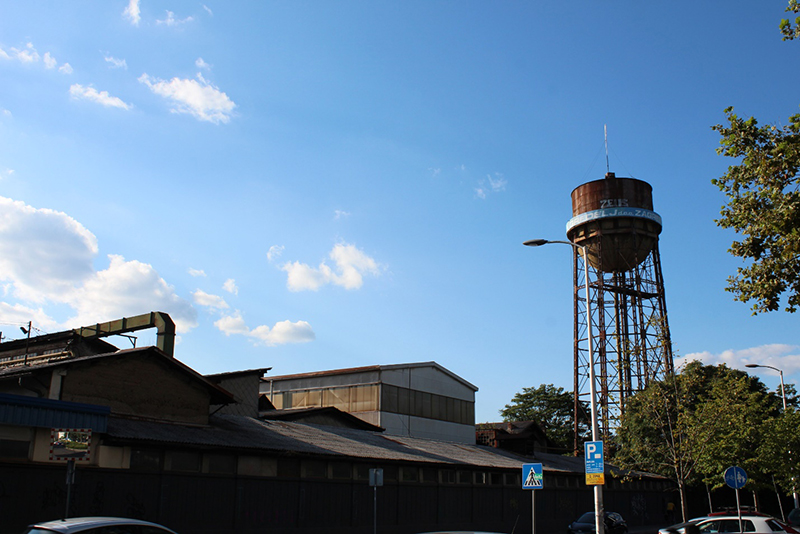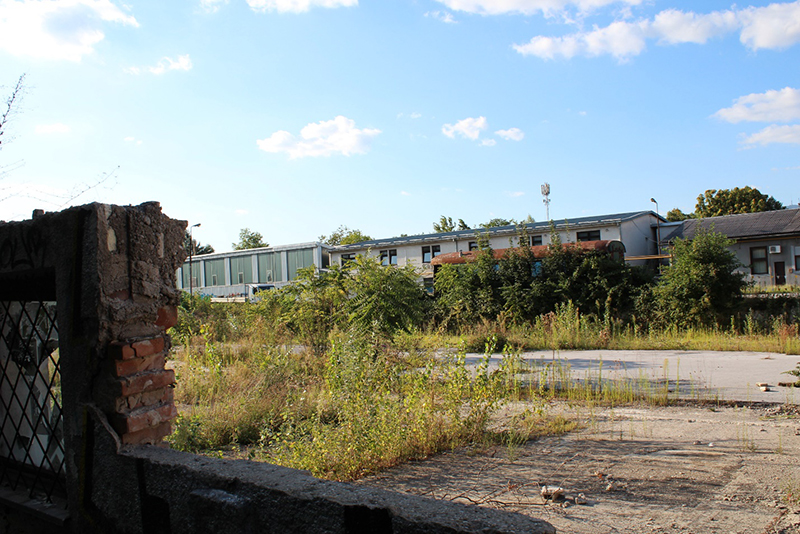Zagreb – Gredelj is an abandoned industrial zone for the production of railway waggons, located in Zagreb city centre. A few years ago, factory facilities were moved to the new location in Zagreb suburbia. The city government aims to revitalise Gredelj from a degraded area to an attraction fully integrated into the fabric of the contemporary city. Gredelj includes semi-used railway repair halls and abandoned trains on closed tracks, along with separate buildings for railway employees. Located in Zagreb city centre on 45 hectares, it is the most important location for the city revitalization, only a 15 minute walk from the main city square.
Authors: Lana Peternel, Nikolina Hazdovac Bajić
Types: OBSERVATION, VISUAL ESSAY, AUTOETHNOGRAPHY
Theme: Deindustrialization, Industrial Zone in the City Centre, Devastation, Post-socialism, Memory





As someone who self-describes as an ethnographer, writing field notes is part and parcel of my everyday job. Even if I am not every day on the field, I am in contact with my fieldwork notebook on a daily basis, either reviewing them to provide proper quotations in a paper I am writing or revisiting them to contextualize a project proposal. For me, writing field notes and reading them regularly as well as capturing important insights from these field notes through other modes of active writing are part and parcel of the regular set of strategies and techniques available to qualitative researchers (Raul Pacheco-Vega, Writing Field Notes and Using Them to Prompt Scholarly Writing, International Journal of Qualitative Methods, 2019)
This is one of the many, but extremely, important ways in which we democratize and advance knowledge. Field notes and fieldwork can also help us understand vulnerable and marginalized populations and help policy makers devise solutions to their problems (Pacheco-Vega & Parizeau, 2018). Writing robust and powerful field notes thus remains a challenge, but as I have argued here, it is also a solvable one (Raul Pacheco-Vega, Writing Field Notes and Using Them to Prompt Scholarly Writing, International Journal of Qualitative Methods, 2019)
.
Photo Album, Diary Secrets and Field Notes
Gredelj is, as a devastated industrial zone, an inspirational space in the city of Zagreb. For those of us who spent a part of our lives looking at it every single day for years, it is a part of personal history, a framework of experience. The factory for the production of railway waggons and its maintenance was part of Zagreb Railway station with numerous railway tracks, wagons, locomotives, buildings, halls, garages and sheds. However, there were people who lived and worked in that area. Gredelj was established and operated in an incredibly large area, by the time in the very city centre of Zagreb. However, for us who lived next door, it was a place of a perpetual challenge and enigma, how to play at the edge of such a “dangerous” place. As it was presented to us. Gredelj was a huge factory, but in the same time, a zone of mystery for the kids. My younger brother and I lived on Strojarska Street, at the corner of Proleterskih Brigada Street 235, second entrance, second floor, which is today’s Vukovarska Street. However, small gangs of kids used to explore the roofs of nearby Gredelj barracks, halls, garages, and, of course, wagons at numerous hidden spots. The strategy of our parents’ defence against playing in the dangerous industrial zone was complemented by additional fear production. Honestly, based on convincing arguments and the awe-inspiring effect that the immense industrial zone had, I never set foot in Gredelj. Moreover, I was not alone. I could not overcome the fear, thanks to the real experiences of friends getting lost or injured in Gredelj. At the end of the story, it was nothing serious, but sometimes watching kids playing in the dangerous factory space live from the window often resulted in direct intergenerational transmission of stress. That is why for Dubravka, my best friend, and me, it was enough just to observe at the railway tracks, locomotives, wagons, excavators, and similar machinery needed to manage such a huge factory system. We observed for years and tried to figure out – who are the people working in Gredelj, and where they were going after 3:00 PM when the siren sounded. People in blue uniforms came out in all directions when the factory doors were opened for the end of the working day. Duba and I spent ten years together, from 1979 to 1989 when I moved with my family to another, much greener part of the city. I remember how we tried to make a story of the picture of Gredelj factory workers. After about twenty-five years, Gredelj no longer exists in Strojarska. The industrial zone and the factories were transformed, shifted to something else, neglected, deteriorated, and turned into a museum of capitalism after socialism (Dzenovska 2020). Gredelj partly disappeared, and residential buildings sprang up in the space where coal used to be unloaded. Multistore buildings, a shopping centre, cafes, a parking lot, and a business skyscraper.
Now, as I explore isolated spaces in Zagreb, abandoned empty factories, my goal is to autoethnographically describe and partly resonate with Gredelj. I would like to explore the content of my memories of the image of Gredelj. How did we as kids experience Gredelj? What Gredelj could or should have been? One thing I remember well is the wish to transform Gredelj into a cinema. When I think about how many times I have written during this project that people in isolated communities imagine having a cinema, I wonder how much Gredelj isolated us from the city. How isolated were the people who worked and lived there from us? A cinema was never built instead of Gredelj. Just the memory of our dreams was inspiring for the beginning of research that we will continue in the second year.